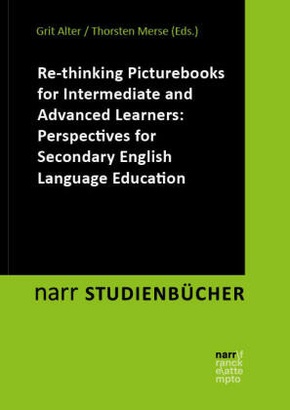Re-thinking Picturebooks for Intermediate and Advanced Learners: Perspectives for Secondary English Language Education
| Verlag | Narr |
| Auflage | 2023 |
| Seiten | 262 |
| Format | 24 cm |
| Großformatiges Paperback. Klappenbroschur | |
| Gewicht | 497 g |
| Artikeltyp | Englisches Buch |
| Reihe | narr Studienbücher LITERATUR- UND KULTURWISSENSCHAFT |
| ISBN-10 | 3823384740 |
| EAN | 9783823384748 |
| Bestell-Nr | 82338474A |
Der didaktische Wert von Picturebooks für den Englischunterricht in der Grundschule gilt als unumstritten. Jedoch gibt es in Forschung und Praxis derzeit kaum Ansätze, wie der Transfer dieses vermeintlich kindlichen Literaturmediums in die Sekundarstufen gelingen kann. Dieser Band legitimiert picturebooks als komplex angelegte Textform, die sich auch mit fortgeschrittenen Lernenden zu kompetenz- und inhaltsorientierter Arbeit im Englischunterricht anbietet. Die im Band versammelten konzeptuellen und empirischen Perspektiven zeigen Lehramtsstudierenden, Referendar:innen und Lehrkräften konkret auf, wie vielfältig Picturebooks den Unterricht bereichern können.
The pedagogic value of picturebooks for teaching English in primary schools is undisputed. However, they also hold immense potential for secondary English language education. Their intricate design, thematic complexity, and rich options for competence development, e.g., in areas such as critical thinking or fostering visual literacy, transcend primary classrooms. This volume engages in a research-based discourse of how the transfer of this supposedly childlike literary medium to the secondary level can succeed. It legitimizes picturebooks as a complex text form that lends itself to competence- and content-oriented learning in English lessons with intermediate and advanced learners.
The pedagogic value of picturebooks for teaching English in primary schools is undisputed. However, they also hold immense potential for secondary English language education. Their intricate design, thematic complexity, and rich options for competence development, e.g., in areas such as critical thinking or fostering visual literacy, transcend primary classrooms. This volume engages in a research-based discourse of how the transfer of this supposedly childlike literary medium to the secondary level can succeed. It legitimizes picturebooks as a complex text form that lends itself to competence- and content-oriented learning in English lessons with intermediate and advanced learners. The conceptual and empirical perspectives collected in this volume offer prospective and practicing teachers concrete insights on how picturebooks can enrich the classroom in many ways. A wide range of practical examples illustrates their potential for teaching English in secondary schools - from promot ing different literacies and literary learning to focusing on topics such as the environment, social justice, or cultural diversity. With a foreword by Bettina Kümmerling-Meibauer

